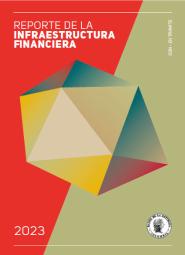F34
A continuación, se listan los contenidos disponibles en el portal relacionados con la consulta.
- Publicación |Models with an occasionally binding credit constraint have been used to analyze financial crises and previous literature has highlighted that the specific form of this constraint is decisive for policymaking conclusions.
- Publicación |Abstract
Our study analyzes the impact of debt moratorium policies, possibly the oldest approach to addressing repayment problems. Using Colombian administrative data, we compare firms that narrowly met the criteria for moratoria (eligible firms could not exceed 60 days overdue…
- Publicación |Abstract
We show that capital controls (CC), by slowing-down firm debt-growth in the boom, improve firm performance during crises. Exploiting a tax on foreign-currency (FX) debt inflows in Colombia before the Global Financial Crisis (GFC) and multiple firm-level and loan-level…
- Publicación |Abstract
We combine two modifications to the standard (current and total income) collateral constraint that has been commonly used in models that analyze financial crisis interventions. Specifically, we consider an alternative constraint stated in terms of future and disposable income. We find…
- Publicación |Abstract We investigate the impact of fiscal expansions on firm investment by exploiting firms that have multiple banking relationships. Further, we conduct a localized RDD approach and compare the lending behavior of banks that barely met and missed the criteria of being a…
- Publicación |Abstract How does the expansion of domestic banks in international markets affect the bank lending channel of monetary policy? Using bank-firm loan-level data, we find that loan growth and loan rates from international banks respond less to monetary policy changes than domestic…
- Publicación |Abstract We study how capital controls and domestic macroprudential policy tame credit supply booms, respectively targeting foreign and domestic bank debt. For identification, we exploit the simultaneous introduction of capital controls on foreign exchange (FX) debt inflows and an increase of…
- Publicación |
We study the determinants of sovereign default risk for a group of 23 OECD countries using quarterly data spanning the period between 2000:Q1 and 2016:Q3. Applying the recently developed panel dynamic heterogeneous common correlated effects estimator of Chudik and Pesaran [2015] our study…
- Publicación |
The integration of emerging economies in world financial markets allowed these countries to import foreign capital. In some cases, however, the capital inflows have been interrupted by sudden reversals and severe financial crises. Although excessive borrowing is a necessary condition for a…
- Publicación |
In an open-economy model with financial constraint, Schmitt-Grohé and Uribe (2017) propose an expression for a capital control policy. From this expression, they argue that the optimal tax, i.e. the one that solves the overborrowing problem, is indeterminate when crises occur (i.e. when the…
- Publicación |
In a previous paper (Parra-Polania and Vargas, 2015) we modify the financial constraint of a very standard model to incorporate the fact that international lenders take into account that taxes (or subsidies) affect borrowers’ income available for debt repayments, and find that ex-post…
- Publicación |
We argue that international lenders take into account that taxes (or subsidies) affect borrowers’ available income for debt repayments. Using an endowment-economy model, we show that by incorporating this fact into the analysis of financial crises from the pecuniary externality perspective, ex-…
- Publicación |
We study nancial crises in a small open production economy subject to credit constraint and uncertainty on the value of debt repayments. We nd that the possibility of reducing the severity of future crises encourages the central planner (CP) to increase both the crisis frequency and current…
- Publicación |
We study the determinants of sovereign default risk in Colombia by focusing on different time spans of risk which are indicated by yield spreads of government bonds with different maturities. Cointegration regressions are performed to analyze whether the drivers of short-run default risk are…
- Publicación |
The paper provides a model of the banking firm in the macroeconomy intended to explain what determines the interest rate spread. A key factor explaining the spread in our model is the resource cost of capital. A statistical result confirms the prediction of the model, that is, the bank's spread…
- Publicación |
The study presented here is a follow-up study to Rowland and Torres (2004), who used a panel data framework together with data from 16 emerging market issuers to identify the determinants of the spread and the creditworthiness. Since many new issuers of emerging market sovereign debt have…
- Publicación |
This study uses a panel-data framework to identify the determinants of the spread over US Treasuries of emerging market sovereign issues as well as of the creditworthiness of the issuers, where the latter is represented by the Institutional Investor’s creditworthiness index. We use a sample of…
- Publicación |
This study uses two different econometric frameworks to study exchange rate pass-through to import, producer and consumer prices in Colombia. Both frameworks are based on vector autoregressive (VAR) models, the first using an unrestricted VAR model, and the second using the Johansen framework of…
- Publicación |
This study develops three exchange rate models as well as a simple statistical model defined as a random walk with a variable drift. The exchange rate models all use the purchasing power parity hypothesis to account for the long-term relationships between prices and the exchange rate, together…
- Publicación |
This paper tests for purchasing power parity (PPP) between Colombia and its main trading partners using the Johansen framework of multivariate cointegration. The tests shows that PPP does not hold in the strong sense, but a clear purchasing power relationship is, nevertheless, show to exist. The…





















































